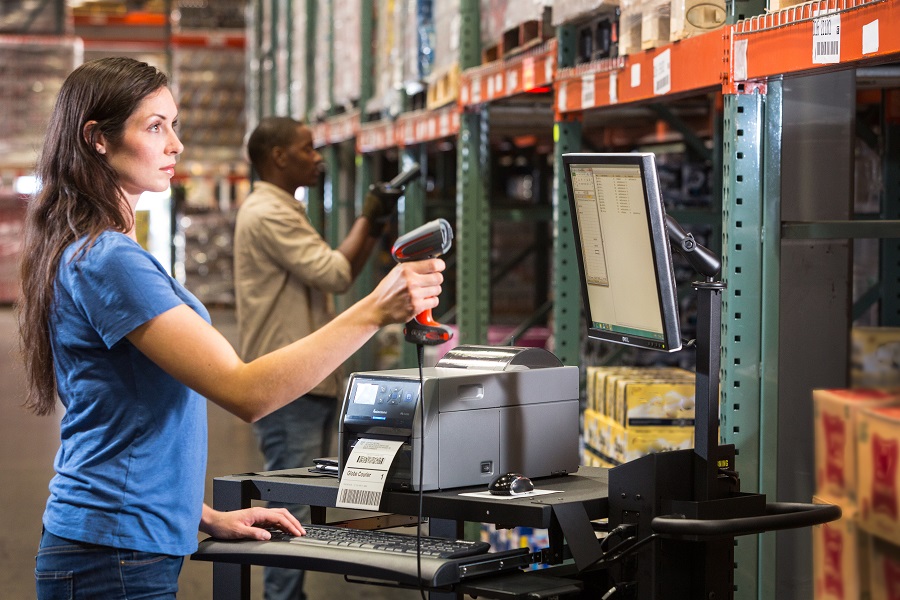When selecting a barcode scanner for a given application, end users need to know what types of barcodes they will scan and under what conditions in order to make an informed choice. There are thousands of different barcode symbologies available, but they all fall into two general categories: one-dimensional (1D, or linear) or two-dimensional (2D) barcodes.
Increasingly, many companies incorporate both 1D and 2D barcodes into their labels, often at the request of customers or to meet industry-specific labeling standards (as is the case in aerospace, automotive, and other industries).
Fortunately, 2D barcode scanners can read both linear and two-dimensional barcodes. For example, Honeywell’s Granit series of scanners includes the Granit 191Xi, an industrial scanner that can read both types of barcodes, along with the SR61-HP, which includes the company’s fastest scanning engine.
1D vs. 2D: What’s the Difference?
What are the differences between these two types of barcodes? 1D codes are likely the most familiar. The common UPC code found on grocery and consumer items is a linear code that uses variable-width lines and spaces to encode the data. These codes hold a limited number of characters; in order to add more numbers, the barcode itself has to be longer.
Linear codes also depend on database connectivity to be meaningful. Once the scanner reads the numbers in the code, they have to be linked back to product data, pricing data, or other information.
Other common 1D barcodes include Codabar (used in libraries and for overnight package delivery), Code 39 (used in defense and automotive applications), GS1 DataBar (used in healthcare), and Code 128 (a high-density code used in shipping).
2D Codes Offer Greater Capacity
2D barcodes use a matrix or pattern to encode data. These patterns of squares, dots, hexagons and other shapes can be much smaller than linear codes but hold significantly more data (thousands of characters) because the information is encoded in both the vertical and horizontal dimensions of the pattern.
These barcodes can also encode images, website addresses, sound, and other varieties of binary data. Because of this, they can be scanned and read regardless of whether the scanner is connected to a database.
2D barcodes can be used to mark very small items where a traditional barcode label won’t fit. These types of codes have been used to identify everything from surgical instruments to circuit boards inside of a computer.
Common 2D barcodes include QR Code (which is often used in advertisements and on business cards), Datamatrix (used to mark very small items like electronic components), and PDF417 (which can hold up to 1.1 kilobytes of data).
Operationally, the critical difference between the two types of barcodes is in the type of reader required to scan them. Linear codes can be read with a traditional laser scanner; 2D barcodes must be read using a camera-based imaging scanner. However, as noted before, an imaging scanner can read both types of codes.
Functionally, which type of code is used will depend on the application. Linear codes tend to be used in scenarios where the associated data is prone to changing frequently (i.e., pricing or the contents of a container). 2D barcodes are used where there may not be database connectivity, where space is limited, and where larger amounts of data are required.
Most companies use a variety of different codes for different applications. A glance a typical shipping label or package, for instance, will reveal as many as a half-dozen different types of barcodes on a single box. By knowing the capabilities (and limitations) of both 1D and 2D barcodes, you can make the right decision for your operation.





